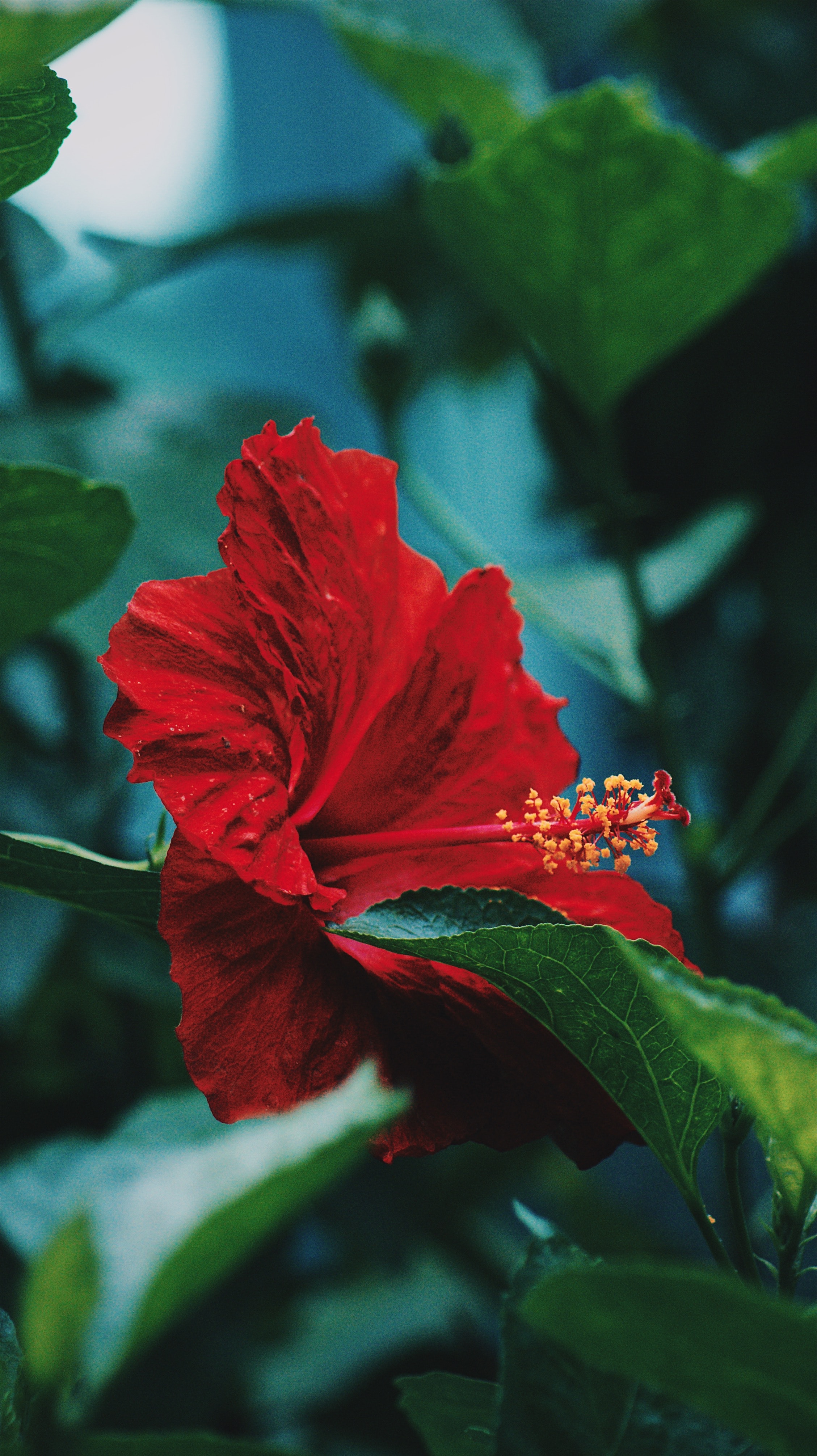You have probably already swooned in front of this superb pink flower, which conjures up images of sunshine and travels to far-flung lands. But did you know it was edible and delicious as a tea?
Let’s discover the flavors and benefits of hibiscus, as well as how to enjoy it as an infusion!
How to Enjoy Hibiscus Tea?
There are several varieties of hibiscus, but hibiscus sabdariffa is the only edible one! In some countries, this Latin name has been replaced by other monikers – such as China Rose in England and Flor de Jamaica in Mexico – but they really are the same plant!
This bush from the Mallow family is originally from West Africa, where it grows in abundance. In Senegal, for example, hibiscus sabdariffa is grown across the entire country and harvested by hand. It is a popular plant, and its tea, known as Bissap is a national drink. Bissap tea is served at every occasion, from daily life to major celebrations.

Hibiscus Sabdariffa, an Edible Variety
There are several varieties of hibiscus, but hibiscus sabdariffa is the only edible one! In some countries, this Latin name has been replaced by other monikers – such as China Rose in England and Flor de Jamaica in Mexico – but they really are the same plant!
This bush from the Mallow family is originally from West Africa, where it grows in abundance. In Senegal, for example, hibiscus sabdariffa is grown across the entire country and harvested by hand. It is a popular plant, and its tea, known as Bissap is a national drink. Bissap tea is served at every occasion, from daily life to major celebrations.
A Popular Beverage in Senegal
Hibiscus sabdariffa flowers from May through October. When its petals wilt and fall, a bright-red fruit known as a calyx, remains on the stem. This is what protects the buds before they bloom, and the part that is harvested, dried, and made into tea.

Recipes for Hibiscus Tea
When concocting a hibiscus tea, the dried calyxes are first infused in hot water. You can then add a cinnamon stick, a vanilla pod, mint leaves, ginger, and/or a little sugar. With that, your tea is ready!
Flor de Jamaica is also used to flavor pastries and made tarts that can be enjoyed as part of a delicious tea time along with a hibiscus tea or infusion.
Making your own blend is never easy, especially when you are looking for perfection. What’s more, very few people outside of the main producing regions have hibiscus sabdariffa growing in their gardens… We therefore recommend you opt for a pre-made blend!
Two Hibiscus Blends from Kusmi Tea
Two meticulously crafted blends that bring out the full potential of each ingredient:
- AquaExotica, combining the acidity of hibiscus and the sweetness of mango, apple, and dragon fruit. At your next summer garden party, treat your guests to jugs filled with ice cubes and this delicious infusion.
- AquaRosa, a hibiscus infusion with apples and black and red berries that combine to make an intense red liquor. A blend as delicious as it is healthy!
The Benefits of Hibiscus Tea
When consumed as a tea or infusion, hibiscus offers a number of interesting benefits, including:
Preventing Kidney Stones
Hibiscus may help prevent the creation of compounds that lead to kidney stones.

An Antioxidant Boost
Just like the tea with which it can be combined, hibiscus is a source of antioxidants, which help fight against cardiovascular diseases, certain cancers, and Alzheimer’s.
Reducing blood pressure
Consuming hibiscus is claimed to be an effective way to reduce blood pressure, making it ideal for people with diabetes.
Reducing cholesterol
Hibiscus is also linked to lower LDL cholesterol and triglyceride levels, promoting cardiovascular health.
To take advantage of all the benefits of hibiscus teas and infusions, we recommend you enjoy up to four cups per day. A great ritual to include in each one of your relaxing breaks from morning to night!


